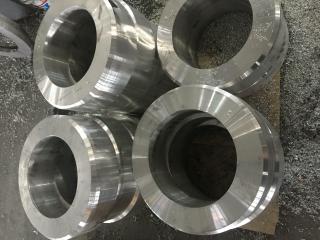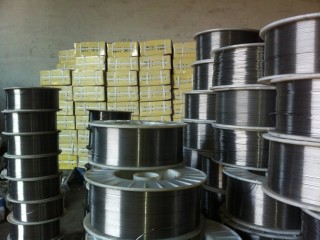The quality and properties of the alloy are determined according to needs, and different chemical composition contents must be obtained for different needs:
(1) Carbon; the higher the carbon content, the higher the hardness of the steel, but the worse its plasticity and toughness;
(2) Sulfur; is a harmful debris in steel. Steels with higher sulfur content are prone to brittleness when pressure processing is carried out at high temperatures, which is usually called hot brittleness;
(3) Phosphorus; can significantly reduce the plasticity and toughness of the steel, especially at low temperatures. This phenomenon is called cold brittleness. In high-quality steel, sulfur and phosphorus must be strictly controlled. But on the other hand, low-carbon steel contains high sulfur and phosphorus, which can make it easy to cut and break, which is beneficial to improving the machability of steel;
(4) Manganese; can improve the strength of steel, weaken and eliminate the adverse effects of sulfur, and improve the hardenability of steel. High alloy steel (high manganese steel) with high manganese content has good wear resistance and other physical properties;
(5) Silicon; it can improve the hardness of steel, but the plasticity and toughness are reduced. The steel used by electricians contains a certain amount of silicon, which can improve soft magnetic properties;
(6) Tungsten; can improve the red hardness and thermal strength of steel, and can improve the wear resistance of steel;
(7) Chromium; can improve the hardenability and wear resistance of steel, and improve the corrosion resistance of steel;
(8) Vanadium; can refine the grain structure of steel, and improve the strength, toughness and wear resistance of steel. When it melts into austenite at high temperature, it can increase the hardenability of the steel; conversely, when it exists in the form of carbide, it will reduce its hardenability;
(9) Molybdenum; it can significantly improve the hardenability and thermal strength of the steel, prevent tempering brittleness, and increase residual magnetism and stubbornness;
(10) Titanium; it can refine the grain structure of the steel, thereby improving the strength and toughness of the steel. In stainless steel, titanium can eliminate or reduce the intergranular corrosion of steel;
(11) nickel; it can improve the strength and toughness of steel and improve hardenability. When the content is high, some physical properties of steel and alloys can be significantly changed and the steel’s corrosion resistance can be improved;
(12) boron; when the steel contains trace amounts of (0.001 – 0.005%) boron, the hardenability of the steel can be increased exponentially;
(13) Aluminum; can refine the grain structure of steel and inhibit the aging of low carbon steel. Improving the toughness of steel at low temperatures can also improve the oxidation resistance of steel, improve the wear resistance and fatigue strength of steel, etc.;
(14) Copper; its outstanding effect is to improve the atmospheric corrosion resistance of ordinary low-alloy steel, especially when used with phosphorus, and at the same time, it can improve cutting performance to a certain extent.
Some text and pictures on this site are from the Internet and the copyright belongs to the original creator. If there is any infringement, please notify us in time.


